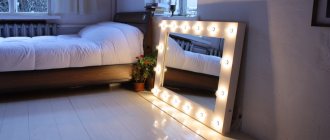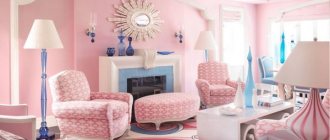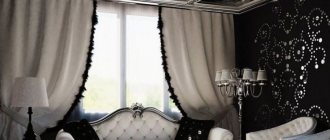Curtains are an invariable attribute of a modern interior. They can radically change the perception of the environment in a room, making it softer and more homely. Correctly selected drapes or curtains become interesting accents, enliven or harmoniously complement the chosen interior style. However, traditional fabric curtains that fall to the floor in longitudinal folds are not always appropriate.
For example, in the kitchen they create inconvenience and take up precious space. An office or workroom requires a simpler, more functional approach. In the nursery, long curtains pose a danger to the baby. Moreover, not every housewife agrees to the additional hassle associated with caring for luxurious curtains in a classic style. That is why modern manufacturers offer a practical and stylish option that can satisfy the most demanding tastes: Roman blinds. Today we will tell you how Roman blinds appeared, what their advantages are, and also consider ways of using them in the interior.
Mounting methods
Roman blinds are attached to plastic windows using special fasteners. But it is attached only if there is a folding window. The fasteners are installed on top of the folding part of the profile. On the front side of the bracket there is a groove into which the cornice is inserted.
The cornice is secured to the wall using a holder, which is screwed to the base with self-tapping screws. The number of holes for installation depends on the length of the curtain rod and the weight of the curtain. There must be at least three of them. Two on the sides and one strictly in the middle.
Using a hammer drill or electric drill, holes are drilled. A dowel is inserted into them, onto which the product is mounted using screws.
Children's room
Roman curtains for a children's room can be of bright, cheerful shades.
Or they are made in rather restrained colors, if this dictates the overall style of the children's room.
In the nursery, you can safely experiment with decoration: add fringe, beads, tassels or ribbons.
For children, it is better to choose curtains made from natural, eco-friendly fabric, preferably with a dense and smooth texture. It can be satin, poplin, thick linen or silk, denim. These curtains are breathable, durable and easy to care for.
The illumination of the nursery has to be changed depending on what function it currently performs: a playroom, a bedroom or a classroom. Therefore, it is better to combine Roman blinds in this room with drapes or curtains.
If you prefer to decorate a window with only one type of curtain, choose a model from two fabrics of different densities. Another option is Roman blinds that are independent from each other, hung in two rows.
For windows in a children's room, manually controlled curtains are preferable. The remote control mechanism is too tempting for children, and therefore it often breaks down in the nursery.
Remember that the background color of the curtains affects the child's psyche. Thus, blue, cyan and green colors relieve stress and calm, red activates and encourages action, yellow and orange lift your spirits and improve appetite.
Material for making curtains
Modern curtains in the interior perform the main functional purpose - they regulate the lighting in the room. Modern room design styles are based on minimalism of shapes and designs. They leave maximum free space, create conditions for understatement, freedom of thought and imagination. Therefore, when creating elegance and simplicity in design, preference is given to natural fabrics and materials.
For Scandinavian style, eco-style, art deco, futurism, avant-garde, linen with an expressive, coarse weave or cotton is suitable. They are environmentally friendly, do not emit harmful substances into the air, are hygroscopic, and gently diffuse light.
Synthetic materials used include polyester, lavsan, acrylic, and fabrics based on mineral fibers. They are durable, strong, lightweight, can withstand elevated temperatures, do not absorb moisture, and do not lose shape or color.
To create exclusive products, thin bamboo panels, cellulose fiber or jute are used. In rare cases, curtains are made of silk to create an original Japanese style.
Without skills in working with fabric, it is difficult to complete the work of sewing curtains yourself. After all, the slightest mistake or distortion will lead to the rejection of the entire product. Therefore, trust the professionals. Custom-made curtains can be made to individual sizes in an online store or studio.
When choosing curtains, be guided by your own taste, compliance with the overall design concept of the room, the holistic design system and the harmony of the interior composition. Comfort and coziness will be ensured.
Living room
These curtains are perfect for living room interiors. And to fully match the style of the interior, you just need to choose the right fabric.
Solid plain fabrics are ideal for classic interiors.
They will look elegant in a modern living room.
The fabric does not have to be monochromatic, but then it is desirable that the pattern matches the style with the general “mood” of the room. For example, you can use checkered or vertical striped fabric, with colors to match other elements of furnishings and decor, to give the interior the spirit of “good old England”.
In a room whose walls are decorated in discreet pastel colors, curtains in the Romanesque style, with a contrasting pattern or ornament, will look impressive.
They can be placed on every part of the window. These curtains are especially suitable for bay windows and windows consisting of separate sections.
Today, when eclecticism and layering are in fashion, Roman blinds are often combined with other types of window curtains. In classic interiors they are combined with curtains or drapes, in modern ones - with horizontal and roller blinds.
An ensemble of Roman blinds and two curtains looks especially impressive in a spacious room with high ceilings. If the living room is not too large, it is still better to limit yourself to only the Roman model, to match the surrounding environment or in a contrasting color.
Roman curtains made of not too thick fabric with a small elegant pattern, for example, a silver floral print, will add lightness and sophistication to the interior. A curtain made of thick tapestry or jacquard with an elaborate “royal” ornament will add solemnity and aristocracy to the atmosphere of the living room.
The lighter and lighter the curtains, the airier and easier the living room design is perceived. This impression can be enhanced even more if you combine translucent Roman blinds with tulle or muslin.
Adherents of natural materials and ecological style can choose Roman blinds made of bamboo, straw or undyed coarse linen. They will create an atmosphere of naturalness and closeness to nature in the living room interior.
Recently, designers are increasingly recommending the use of double Roman blinds in the living room. They consist of two canvases of different densities, one of which acts as a curtain, and the other as a curtain. They can be selected from fabrics of the same color or contrasting ones. These curtains look great on windows of any size.
Photo of Roman blinds
Decoration in various styles
Roman blinds will be a very harmonious addition to the kitchen in various styles.
Modern (minimalism, loft)
For such interiors, classic, laconic options are suitable, without unnecessary patterns or designs. With their clear lines, they will create the effect of soft, diffused light, emphasizing the freedom and functionality of the space.
Provence
The classic design is short, light or thick curtains made from natural materials, with various patterns and a number of decorative elements inherent in the Provence style.
Classic
Roman curtains, combining practicality and elegance, will perfectly complement the overall look of a kitchen in the classic and neoclassical style, adding zest to it and creating the necessary accents.
The photo shows burgundy-colored Roman curtains in a classic-style kitchen interior.
Care
The most practical option for window curtains are Roman blinds. Accordingly, they are unpretentious in care. At the same time, there are models on the market created for the kitchen, namely, they are treated with a special dirt-repellent impregnation, so they remain clean for a long time.
At the same time, in order to extend the life of the curtains and make them look attractive, you should follow certain rules:
- If there is no heavy contamination, it is enough to clean the canvas with a regular brush, performing dry cleaning;
- If severe contamination occurs, then cleaning with a vacuum cleaner using a furniture attachment may be sufficient;
- When cleaning the kitchen, it is recommended to fully understand the curtains. This will prevent dust and dirt from entering;
- If the curtains are not treated with impregnation, they are usually washed 1-2 times a year. In this case, you should follow the manufacturer's recommendations. The main thing is to pull out the slats installed on the canvas from the wrong side.
Features of choice
Description of the mechanism Advantages and disadvantages Types of designs Practical tips and recommendations for selection
Indeed, a popular choice is Roman blinds in the kitchen, photos in the interior, as well as useful recommendations for selection and features are in the article.
- Kitchen
Choosing curtains for the kitchen: fashion trends and current prints (45 photos)
Varieties
There are three types.
- Classic - when opened, they are a smooth canvas; when lifted, they gather into folds. This is a simple, laconic type that is suitable for any style, including modern ones: minimalism, scandi or hi-tech.
- Cascading is a more pronounced design, in which even when lowered, the fabric lies in beautiful large folds. Suitable for traditional interiors, as well as if you want to make the window an accent element.
- Frameless - the canvas is simply attached to the cornice, there are no rigid guides, and when lifted it gathers into folds. A good idea for country, eco or Provence and in general for romantic interiors.
Instagram @nyako4ka
Instagram @_tbdesign_
Instagram @marideco.ru
Instagram @ekaterina_kodinceva











